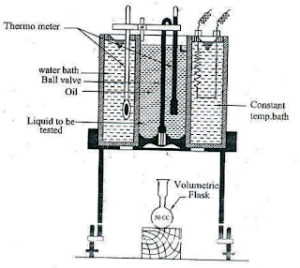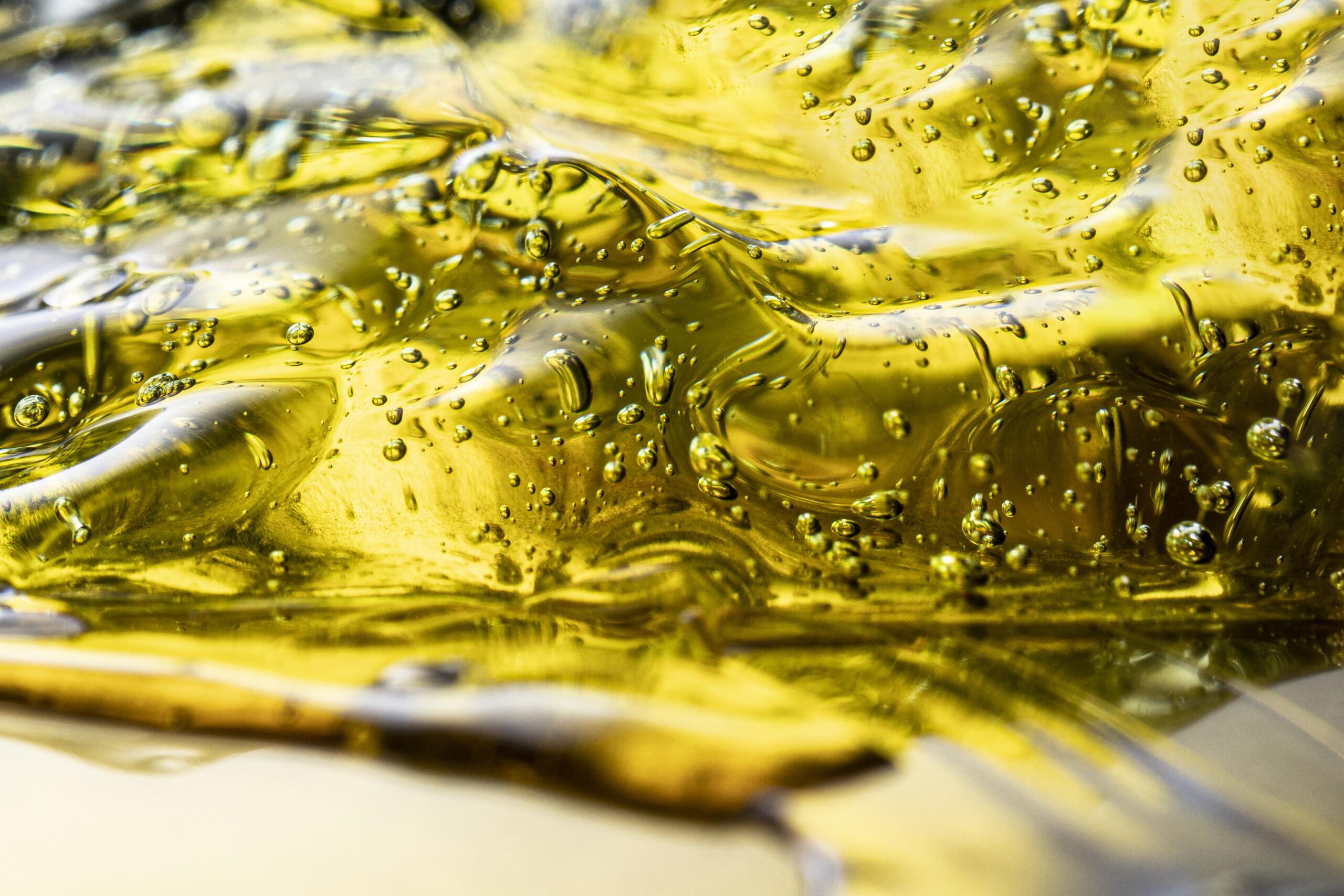The nature and analysis of flow depend on the thermophysical properties such as the viscosity of the fluid being considered. There are various methods for the determination of fluid viscosity, namely the capillary tube method, falling sphere method, rotating cylinder method, or Redwood viscometer.
Viscosity measurement is important for a wide range of applications in various fields, including science, industry, and everyday life. Viscosity is a measure of a fluid’s resistance to flow, and understanding and measuring viscosity is essential for better understanding and controlling the behavior of fluids and materials, leading to improved efficiency, quality, and product development.
The Redwood viscometer is normally used by the petroleum and chemical industries. Let us first understand the meaning of viscosity.
Table of Contents
What are Viscosity and Viscometer? :
It is a measure of the resistance offered by one layer of fluid to the other layer of the same fluid during motion. It is expressed in Pa.s unit. The viscosity of the fuel or petroleum products is experimentally measured by a device called a viscometer.
A Redwood viscometer is used to determine the viscosity of petroleum products. It determines the viscosity in terms of seconds (which are terms as Redwood seconds), it’s the time taken by oil to pass through a standard orifice, and the collection of the same oil in a 50 cc or 50 ml flask. Originally Redwood Viscometer was developed for the measurement of the viscosity of petroleum products.
Types of Redwood Viscometer
‘Redwood Viscometer’ are of two types:
1. Redwood Viscometer No.1 (For fluid having viscosity corresponds to Redwood seconds less than 2000)
2. Redwood Viscometer No. 2 ( For fluid having viscosity corresponds to Redwood seconds greater than 2000). or Type No. 1 & 2 is used depending on the time of oil flow through an orifice at the desired temperature is greater or less than 2000 seconds. Normally viscosity of highly viscous fluids is determined by the use of Type 2.

The difference between Type 1 & 2 is the difference in orifice diameter.
Formula to convert Redwood seconds to kinematic viscosity unit i.e. centistokes.
= A.t-B/t (Where A = 0.26 and B = 171). Where t is flow seconds or Redwood seconds.
This experiment measures the kinematic viscosity of the fluid, not dynamic or absolute viscosity. The absolute viscosity is found by measuring the density of the fluid whose viscosity is being measured. The temperature of the liquid must be considered while getting the value of the density of the liquid.
Thus, Absolute Viscosity = Kinematic Viscosity x Density of liquid
Experimental procedure:
- Fill the oil cup with oil to the required oil level indicated by the marker point. Also, fill the water bath with the required quantities of water to maintain the uniform temperature of the oil. Use different thermometers for water and oil temperature measurements.
- Heat the water at a uniform temperature. This heated water in turn heats the oil at a uniform temperature.
- When the required temperature of the oil is attained, lift the ball above the orifice hole.
- Allow the oil to pass through it (start the stopwatch) and collect 50 CC or 50 ml of oil in the volumetric flask.
- The measured seconds are in terms of the viscosity of the oil measured.
- Repeat the entire process at different temperatures to get the viscosity values at different temperatures.
Pros and Cons:
The redwood viscometer offers a simple and affordable option to measure the viscosity with ease. On the other hand, it has lower accuracy and can be used for specific petroleum products only. This is a limitation of the redwood viscometer.
Watch the entire process in this video.
Get more such basic concepts of fluid and fluid mechanics from this book.
FAQs:
1. What is a Redwood viscometer, and what is its primary purpose?
- Answer: A Redwood viscometer is an instrument used to measure the kinematic viscosity of petroleum products, especially oils and lubricants. Its primary purpose is to assess the flow properties and quality of these products.
2. How does a Redwood viscometer work?
- Answer: A Redwood viscometer works by heating the test sample to a specific temperature and then measuring the time it takes for the sample to flow through a calibrated tube. The flow time is used to calculate the kinematic viscosity of the fluid.
3. What is kinematic viscosity, and why is it important in the petroleum industry?
- Answer: Kinematic viscosity is a measure of a fluid’s resistance to flow at a specific temperature. In the petroleum industry, it’s crucial because it helps determine the suitability of oils and lubricants for various applications and ensures that they meet industry standards.
4. What is the difference between Redwood Viscometer 1 and 2?
Answer: If the viscosity of the fluid is greater than 2000 Redwood seconds, the viscometer 2 is selected else redwood viscometer 1 ( If the viscosity of the fluid is less than 2000 Redwood seconds).
5. Why is temperature control important when using a Redwood viscometer?
- Answer: Temperature control is vital because viscosity is highly temperature-dependent. Maintaining a consistent test temperature ensures accurate and reliable viscosity measurements.
6. How is the kinematic viscosity calculated from Redwood seconds (RS)?
- Answer: The kinematic viscosity is calculated using a calibration factor specific to the viscometer. The formula is Kinematic Viscosity (cSt) = Redwood Seconds (RS) x Calibration Factor.
7. What are the applications of Redwood viscometers outside the petroleum industry?
- Answer: While primarily used for petroleum products, Redwood viscometers can be used to measure the viscosity of other fluids and semi-fluid materials in various industrial and research applications.
8. Are there any limitations or factors that can affect the accuracy of Redwood viscometers?
- Answer: Yes, factors like the condition of the glass tube, temperature control, and the calibration of the instrument can impact the accuracy of Redwood viscometers.
9. How does the Redwood viscometer compare to other viscosity measurement methods, such as kinematic viscometers or capillary viscometers?
- Answer: Redwood viscometers are a simpler and more cost-effective method for measuring viscosity, but they may not offer the same precision as other more advanced instruments. The choice of instrument depends on the specific requirements of the application.
10. What are the industry standards for viscosity measurements using Redwood viscometers?
- Answer: Various industry organizations, such as ASTM International and ISO, provide standards and guidelines for performing viscosity measurements with Redwood viscometers. Users should refer to these standards for proper testing procedures.


what constant to be used?
Does we use redwood viscometer now a days on field?
In Redwood Viscometer in order to find Kinematic Viscosity,V= ((A x t)-(B/t) ) how the values of constants A & B are taken? How do we determine viscometer constant?? Can anyone help me with a convincing solution.
For Redwood viscometer 1, A=0.26 and B=171
The equation: At-B/t, t=Redwood seconds
Yes. Normally it is used for petroleum products.
The value of A and B are determined from design of experiments and can be obtained by calibration of the apparatus. A=0.26 and B=171
nice explaination sir
Where at-b/t equation have which unit
For red wood no.1 and redwood no.2, is same formula to be used?
What is the unit of temperature? Celsius or Kelvin?
Can be any. Does not matter.